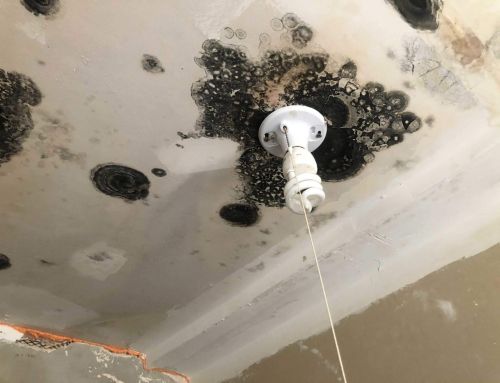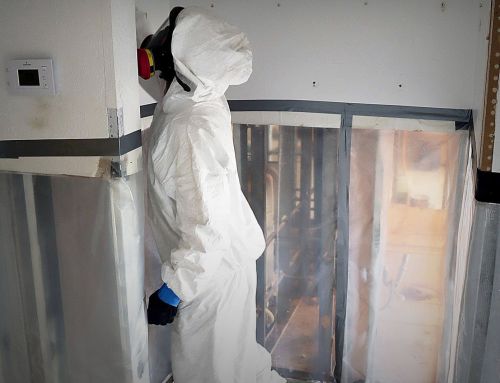Mold is a natural part of the environment and can be found anywhere moisture is present. It is one of the earliest life forms and has existed for thousands of years. Throughout history, the effects of mold and environmental decay have been noted, but formal scientific study began in the early 1800s. The scientific community’s understanding of mold has evolved and will likely continue to change with further research.
Today, we have substantial knowledge about mold, including its biology, lifecycle, environmental roles, and potential impacts on human health. Extensive research proves mold comes from microscopic spores in indoor and outdoor air. These spores attach themselves to people, pets, or objects. Once they land on a surface, these spores begin the decomposition process.
According to the EPA, “Molds gradually destroy the things they grow on. You can prevent damage to your home and furnishings, save money, and avoid potential health problems by controlling moisture and eliminating mold growth.”
A Closer Look
Molds are multicellular fungi that grow in thread-like structures known as hyphae. These hyphae comprise the fungal body’s building blocks and collectively form a complicated network called mycelium. The mycelium is the main body of the fungus and is essential for the fungus’s ability to extract and transport nutrients from the environment.
Reproduction
Mycelium uses hyphae to obtain and transport water, minerals, and other organic matter. It’s typically found in decaying organic matter, where it absorbs nutrients and facilitates the growth of the fungus.
In addition to its role in nutrient absorption, mycelium is responsible for forming spores—the reproductive structures that grow into mold. When conditions are damp, the mycelium releases spores into the environment, initiating new fungal colonies. The mycelium is also responsible for mold’s visible growth and spread on various surfaces.
How Mold Spreads
Mold spores are invisible to the naked eye and can easily float through the air and into your home. With time and exposure to moisture, mold can become the ultimate uninvited guest in the home. Once these spores are on wet surfaces, they grow into the unsightly problem you’re familiar with. Mold doesn’t need a lot of time to grow and spreads rapidly.
Mold’s Purpose
Mold plays a crucial role in the natural process of decomposition. Mold’s primary purpose is to break down and recycle organic matter, such as fallen leaves and dying trees. This process occurs through the secretion of enzymes that break down complex organic compounds into simpler forms that plants and other organisms can use.
Essentially, mold eats through any surfaces it grows on. The longer the mold grows, the more damage it causes. Without mold, organic matter would accumulate, and essential nutrients would be locked away, hindering the growth of new life.
Although it’s a vital part of our ecosystem, mold can prove costly and dangerous in the home when in excessive amounts, leading to potential health risks and structural damage. Still, not all mold is bad. Certain mold species are used in medicines, notably antibiotics for bacterial infections. It is even commonly used in food production, playing a crucial role in cheese, cured meats, and fermented foods like soy sauce.
Mold Needs Moisture
Moisture paired with poor ventilation creates the ideal conditions for mold growth. It is inevitable with prolonged exposure to moisture due to leaks, floods, or high humidity. Indoor mold growth is typically associated with damp conditions. With moisture, mold can attach to the various surfaces around your home, including walls, ceilings, carpeting, and soft materials.
When Does Mold Become a Problem?
Mold becomes dangerous with extensive growth. It is commonly hidden within walls, ceilings, or other concealed parts of the home. These areas may go unnoticed, allowing it to grow undetected and contribute to significant health concerns.
As the concentration of mold spores in the air increases, so does the risk of health complications. Molds are known to produce allergens and irritants. Common short-term symptoms of exposure include nasal congestion, throat irritation, coughing, and eye or skin irritation.
Exposure can also cause long-term health issues, particularly those with allergies, respiratory conditions, or weakened immune systems. Vulnerable populations like infants and older adults are more susceptible to its harmful effects.
Mycotoxins
Certain types of molds also produce mycotoxins. These toxic secondary metabolites are known for their harmful effects on human and animal health. Health impacts can vary based on the type and amount of mycotoxin exposure.
Mycotoxins can enter the human body through ingestion, inhalation, or skin contact. Prolonged exposure to mycotoxins may cause more severe health effects, including neurological issues. However, not all molds produce mycotoxins, and the presence of mold does not necessarily mean mycotoxins are present.
Preventing Mold
Don’t let mold grow into a problem that compromises your home and health. Prevention is the simplest way to tackle mold. Effective moisture control and proper ventilation are essential in mitigating indoor mold growth. Cleaning your home regularly can also help control mold spores, and ongoing maintenance of pipes can prevent leaks and water accumulation.
If a mold disaster strikes, prompt action is necessary. Professional inspection and remediation can ensure a safer living space. Pur360’s professionals are prepared to put your mind at ease and solve your mold problems. You can trust our team to address any issues quickly and effectively.



